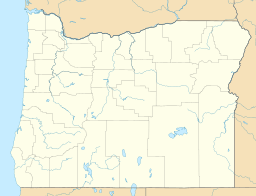Guild's Lake facts for kids
Quick facts for kids Guild's Lake |
|
|---|---|

Exposition balloon over the lake in 1905
|
|
| Location | Willamette River floodplain near Balch Creek Multnomah, Oregon, United States |
| Coordinates | 45°32′49″N 122°43′14″W / 45.54694°N 122.72056°W |
| Type | Lake |
| Surface elevation | 33 ft (10 m) |
| Settlements | Northwest Portland |
Guild's Lake was once a large, low-lying area in Portland, Oregon. It was a swampy, flood-prone place near where Balch Creek met the Willamette River. Today, this area is part of northwest Portland's industrial district.
Native American Multnomah people lived on nearby Sauvie Island. However, they did not settle in the swampy Guild's Lake area itself. The lake was about 33 feet (10 meters) above sea level.
Contents
How Guild's Lake Got Its Name
The lake was named after Peter Guild. He was one of the first settlers in the area in the 1800s. In 1847, he claimed nearly 600 acres (2.4 square kilometers) of these wetlands. This was done through a special law called the Donation Land Claim Act.
Changes Over Time
After Peter Guild passed away in 1870, the land around the lake changed a lot. New owners built sawmills, railroad tracks, and shipping docks. The city even built a garbage incinerator there.
The Northern Pacific Railway built the Guild's Lake Rail Yard in the 1880s. This became a very important place for trains to switch tracks.
Portland's Growing Port
Starting in the 1890s, the Willamette River was made deeper. This helped Portland become a major seaport for large ships. A new port terminal was finished in 1914. These changes made Guild's Lake a key industrial area for Portland.
The Lewis and Clark Exposition
In 1905, a big event called the Lewis and Clark Centennial Exposition took place. It was held on an artificial island built in Guild's Lake. This fair helped the area grow even more.
Filling in the Lake
After the exposition ended, developers started filling in the lake. They used rocks and gravel from the nearby West Hills. They also used mud and sand dredged from the Willamette River.
By the mid-1920s, Guild's Lake was completely gone. It became a dry, flat area ready for new buildings.
Guild's Lake During World War II
During World War II, the area was used for the Guild's Lake Housing Project. This project provided temporary homes for workers. These workers helped build ships at the nearby Kaiser Shipyards.
After the war, many large industries moved into the area. These included companies that processed chemicals and petroleum, made metals, and more.
In 2001, the Portland City Council created a plan. It's called the Guild's Lake Industrial Sanctuary Plan. This plan aims to protect the area as an important industrial district for a long time.


